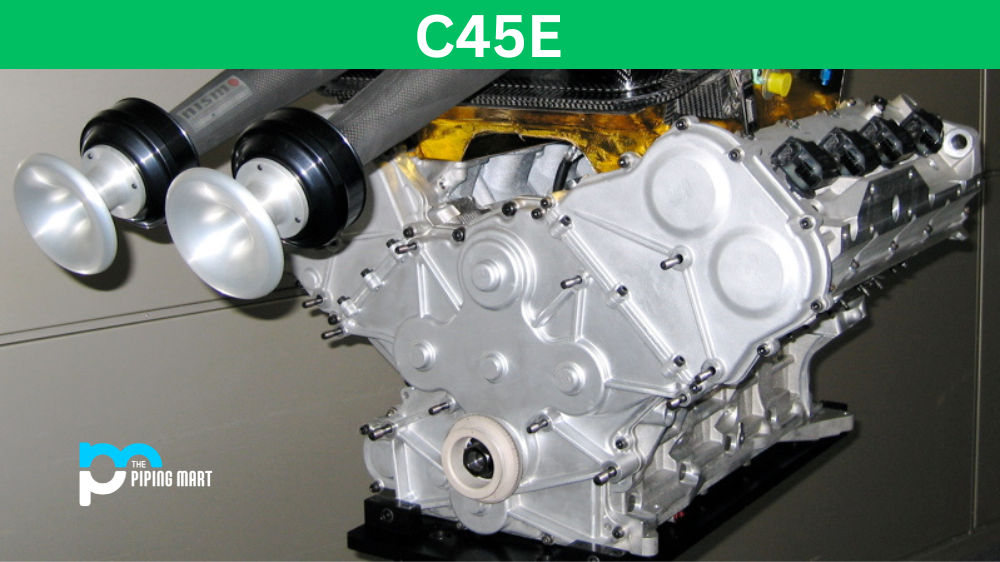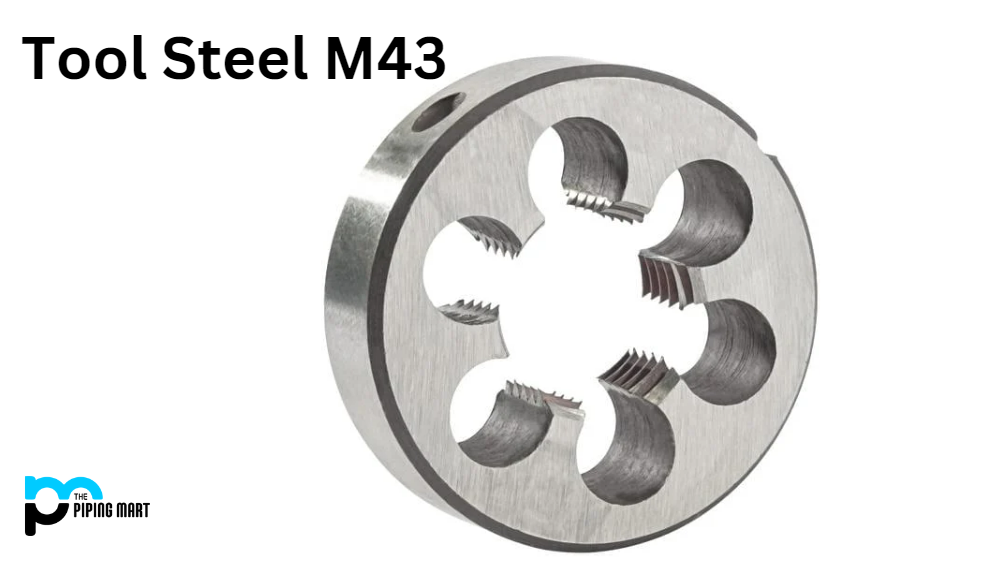AISI 316L stainless steel is an austenitic chromium-nickel-molybdenum stainless steel with corrosion resistance greater than other chromium-nickel steels. This grade of steel is often used in the medical, food industry, construction, and marine applications because it can withstand highly corrosive environments. But what makes this grade so special? Let’s explore the properties and uses of this versatile material.
What Forms is 316 Stainless Steel Available at Piping Mart?
- 316 Stainless Steel Pipes
- 316 Stainless Steel Tubing
- 316 Stainless Steel Pipe Fittings
- 316 Stainless Steel Plates
- 316 Stainless Steel Bolts
- 316 Stainless Steel Valves
- 316 Stainless Steel Channels
AISI- SAE 316L Stainless Steel Composition
SAE 316L SS is known for its superior strength and corrosion resistance. This composition is made up of specifically chosen alloying elements with the goal of enhancing the metal’s mechanical properties while allowing it to work in many industrial applications. Chromium is the main element found in AISI 316L stainless steel, which is essential to ensuring corrosion resistance and strength when exposed to different conditions. In addition, nickel and molybdenum are also two important ingredients that are included to create high tensile strength as well as exceptional formability, weldability, and low-temperature strength. These remarkable characteristics make AISI 316L stainless steel an excellent material choice.
| Grade | C | Mn | Si | P | S | Cr | Mo | Ni | N | |
|---|---|---|---|---|---|---|---|---|---|---|
| 316L | Min | – | – | – | – | – | 16.0 | 2.00 | 10.0 | – |
| Max | 0.03 | 2.0 | 0.75 | 0.045 | 0.03 | 18.0 | 3.00 | 14.0 | 0.10 |
AISI- SAE 316L Stainless Steel Physical Properties
AISI 316L is a popular material choice due to its numerous characteristics and physical properties. From Inconel sheet to heat resistant applications, it is highly sought after across many industries. AISI 316L stainless steel has an impressive yield strength of up to 215 MPa and an ultimate tensile strength of up to 515 MPa meaning it can easily hold heavier loads and high temperatures. Additionally, the combination of chromium and molybdenum prevents oxidation from affecting the surface of the material, making it a great option for those looking for longevity in their constructions. All these properties make AISI 316L stainless steel the ideal choice when quality matters.
| Grade | Density (kg/m3) | Elastic Modulus (GPa) | Mean Co-eff of Thermal Expansion (µm/m/°C) | Thermal Conductivity (W/m.K) | Specific Heat 0-100 °C (J/kg.K) | Elec Resistivity (nΩ.m) | |||
|---|---|---|---|---|---|---|---|---|---|
| 0-100 °C | 0-315 °C | 0-538 °C | At 100 °C | At 500 °C | |||||
| 316/L/H | 8000 | 193 | 15.9 | 16.2 | 17.5 | 16.3 | 21.5 | 500 | 740 |
AISI- SAE 316L Stainless Steel Mechanical Properties
316L SS is a type of Inconel sheet that offers many mechanical properties. It increases both ductility and tensile strength, providing greater impact resistance. The steel is corrosion and heat-resistant with excellent weldability and formability. This makes it perfect for use in the food industry or any other environment where there are frequent temperature changes. AISI 316L stainless steel offers high levels of durability and can easily be fabricated into parts with very tight tolerances. In addition, its compatibility with austenitic alloys allows for the economical production of pre-manufactured components from a single source material. With so much to offer, AISI 316L stainless steel is an ideal solution for many mechanical applications.
| Grade | Tensile Str (MPa) min | Yield Str 0.2% Proof (MPa) min | Elong (% in 50 mm) min | Hardness | |
|---|---|---|---|---|---|
| Rockwell B (HR B) max | Brinell (HB) max | ||||
| 316L | 485 | 170 | 40 | 95 | 217 |
AISI- SAE 316L Stainless Steel Properties
AISI 316L Contains a high amount of molybdenum and chromium content which gives it more corrosion resistance over regular grade 304 stainless steel. The properties of this grade are very similar to those of 304 stainless steel, however; it has a higher yield strength, better creep resistance and improved pitting resistance. This makes it an ideal choice for applications that are exposed to harsh environments or require parts with increased durability.
AISI 316L has a low carbon content (less than 0.03%) which improves its weldability while also making it less prone to stress corrosion cracking and intergranular corrosion when exposed to high-temperature environments. It is also nonmagnetic and heat treatable, making it perfect for machining operations.
- AISI 316L stainless steel is austenitic stainless steel that contains between 2 and 3% molybdenum.
- The addition of molybdenum gives AISI 316L stainless steel improved corrosion resistance over 304/304L and 316/316L stainless steels.
- AISI 316L stainless steel is suitable for a wide variety of applications that require good formability and weldability, such as food processing, petrochemical, and architecture.
- AISI 316L stainless steel can be cold worked to achieve high strengths, although it will become harder and less ductile with work hardening.
- Annealing can be used to restore AISI 316L stainless steel to its original condition; however, this process will also reduce the strength of the material.
316 Stainless Steel Specifications
AMS 5507, AMS 5584, AMS 5653, ASTM A167, ASTM A182, ASTM A213, ASTM A240, ASTM A249, ASTM A269, ASTM A270, ASTM A276, ASTM A312, ASTM A314, ASTM A336, ASTM A403, ASTM A473, ASTM A478, ASTM A479, ASTM A511, ASTM A554, ASTM A580, ASTM A632, ASTM A666, ASTM A688, ASTM A774, ASTM A778, ASTM A813, ASTM A814, ASTM F138
AISI- SAE 316L Stainless Steel Uses
UNS S31603 is commonly used in the medical field due to its ability to resist corrosion from organic acids, saline solutions, and body fluids. It is also widely used in the food industry, where it can be found in kitchen utensils, equipment for food processing plants, and even beer brewing tanks! Additionally, this type of stainless steel is frequently used in construction projects such as bridges or buildings since its weathering capabilities make it durable against harsh outdoor elements like rain or extreme temperatures. Lastly, its excellent resistance to seawater makes AISI 316l great for use in marine applications such as boat fittings or structures near coastal areas.
Conclusion:
AISI 316L is an austenitic chromium-nickel-molybdenum stainless steel that offers superior corrosion resistance compared to other grades of stainless steel. Its properties make it a great choice for use in medical facilities due to its ability to resist organic acids and body fluids; in food processing plants due to its nonmagnetic characteristics; in construction projects because of its weathering capabilities; and in marine applications because of its exceptional seawater resistance. It’s no wonder why so many professionals in the metalworking industry rely on this versatile material!

Meet Bhavesh, a seasoned blogger with a wealth of knowledge and experience. From metal products manufacturing to retail, Bhavesh has a diverse background in various industries and is dedicated to sharing his insights and expertise with readers.




